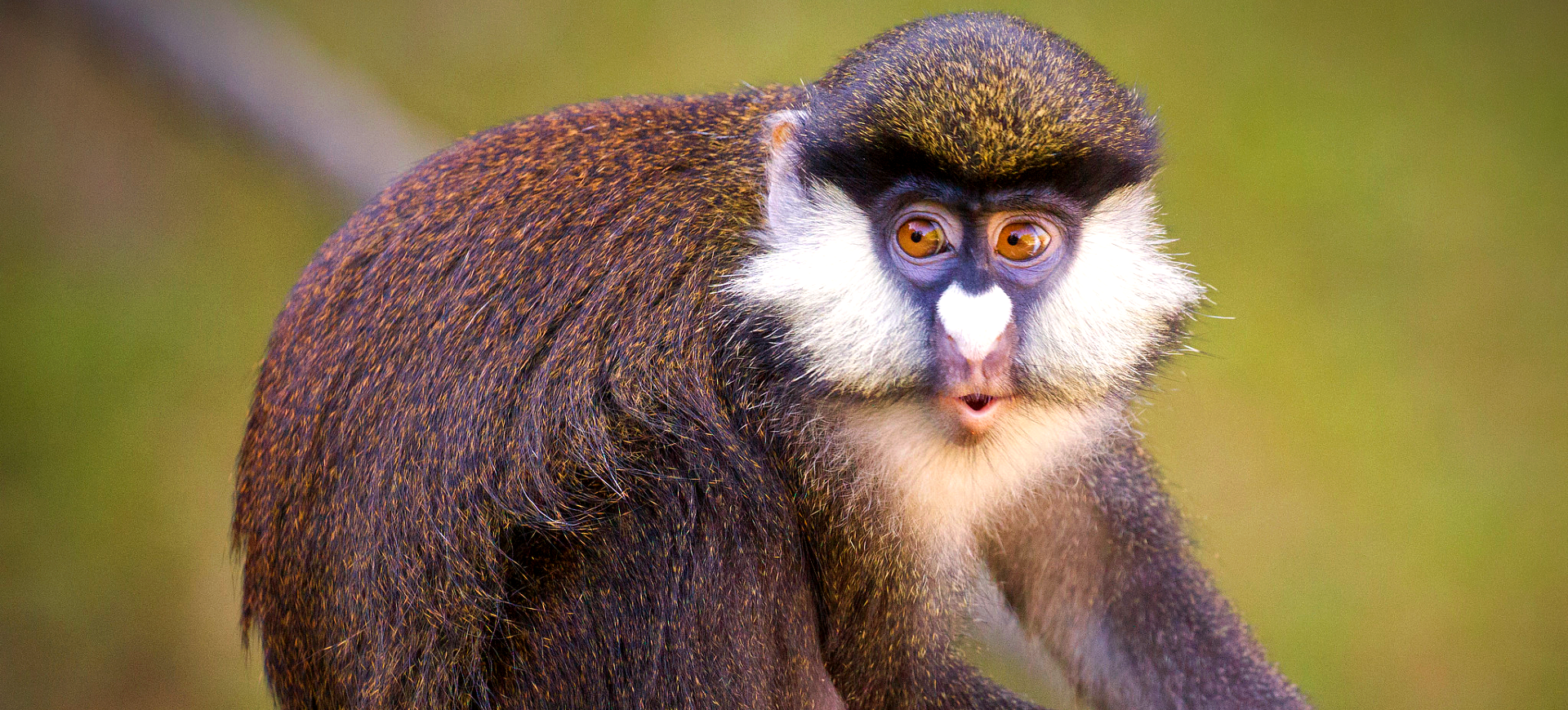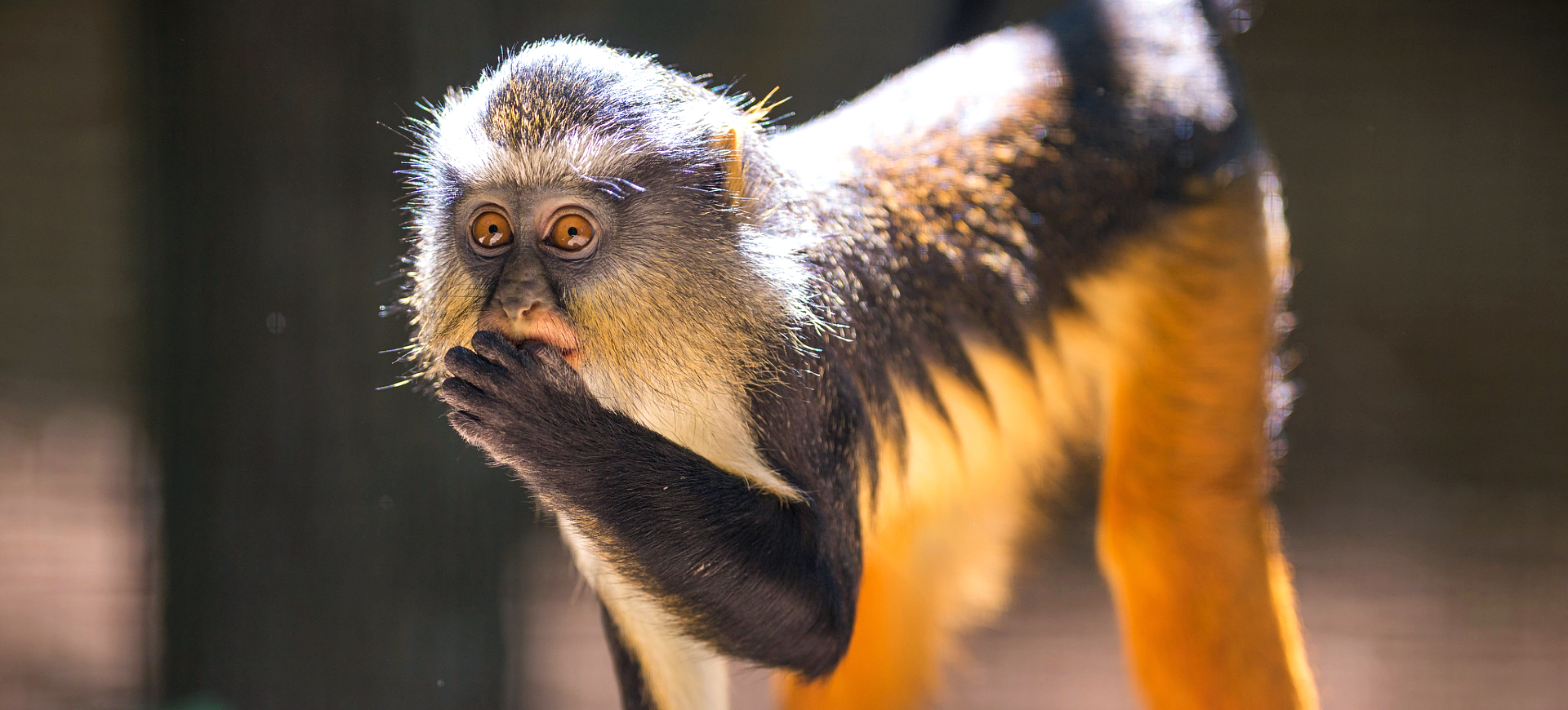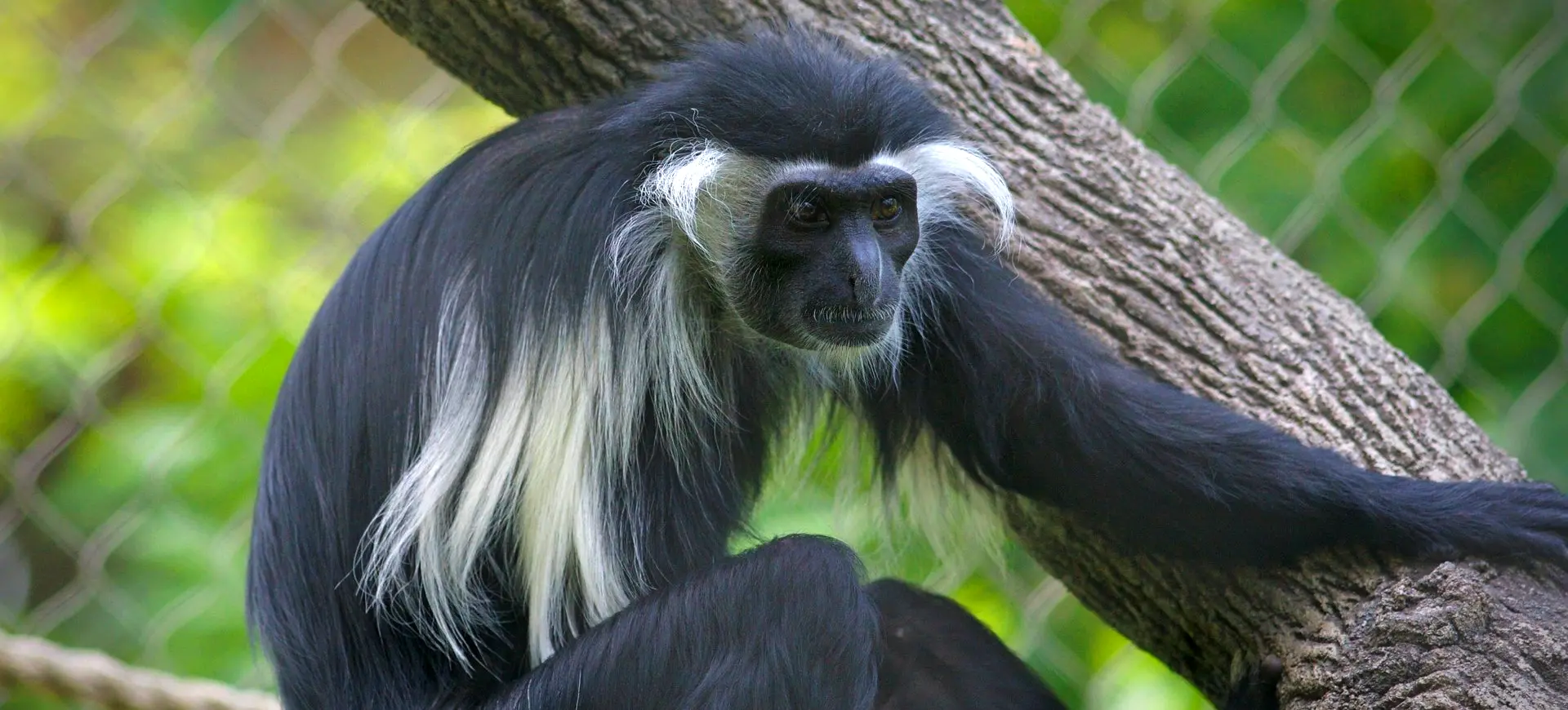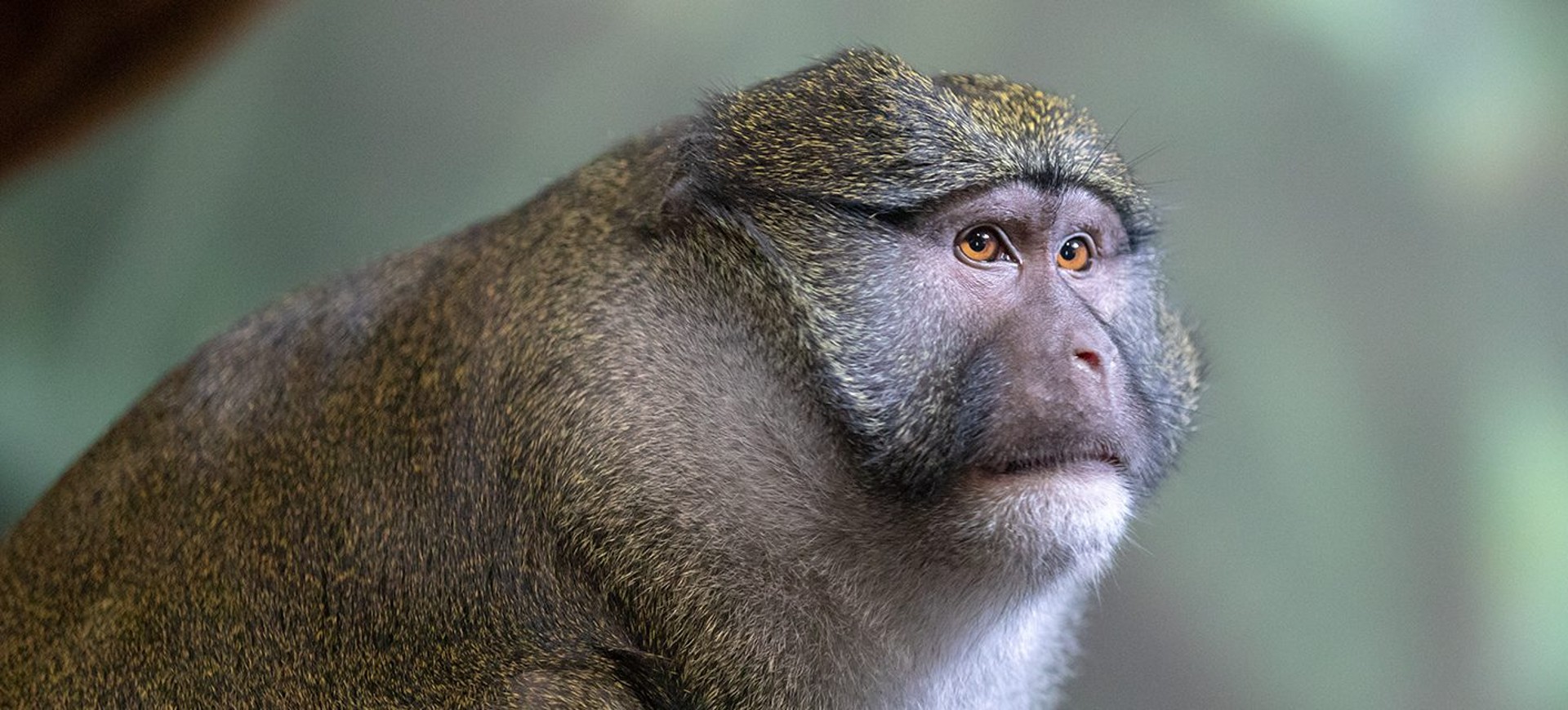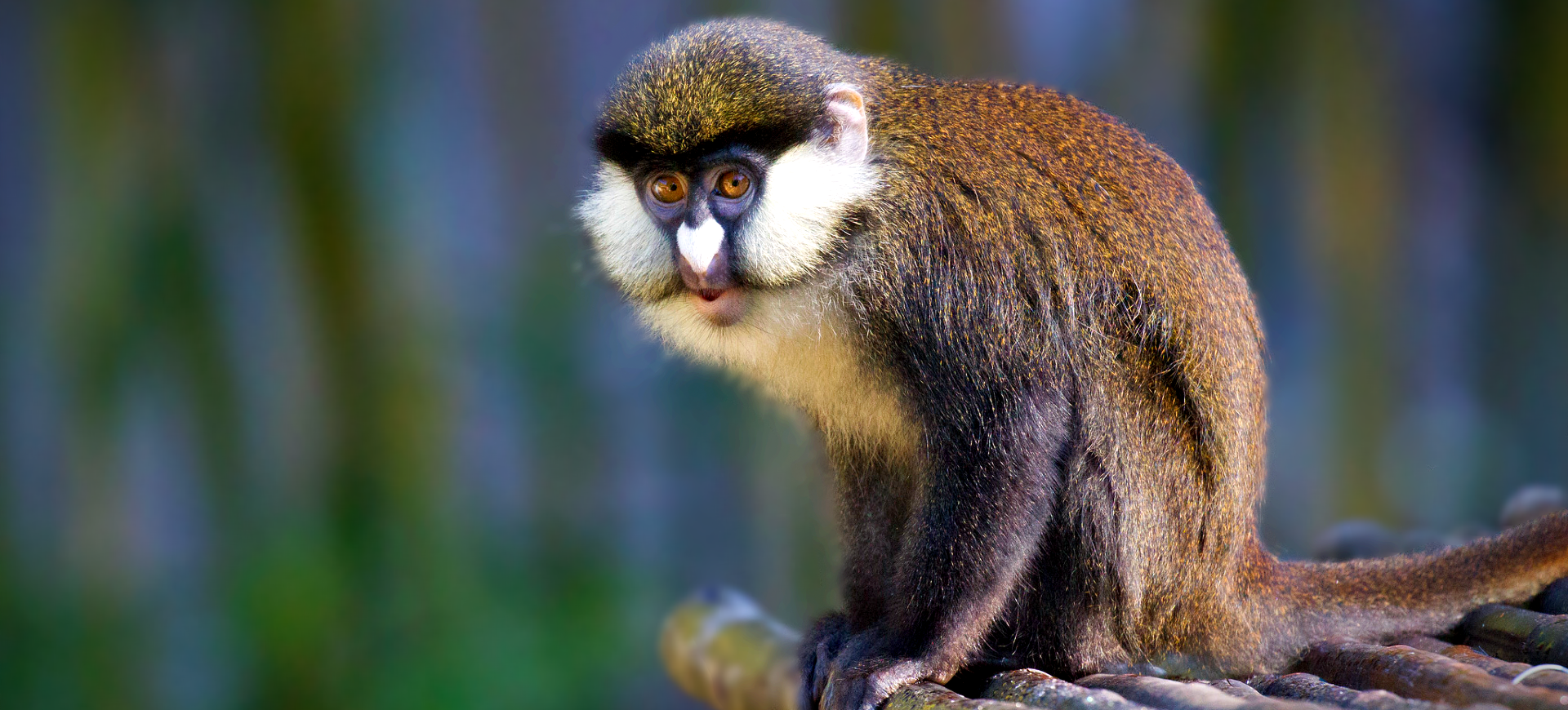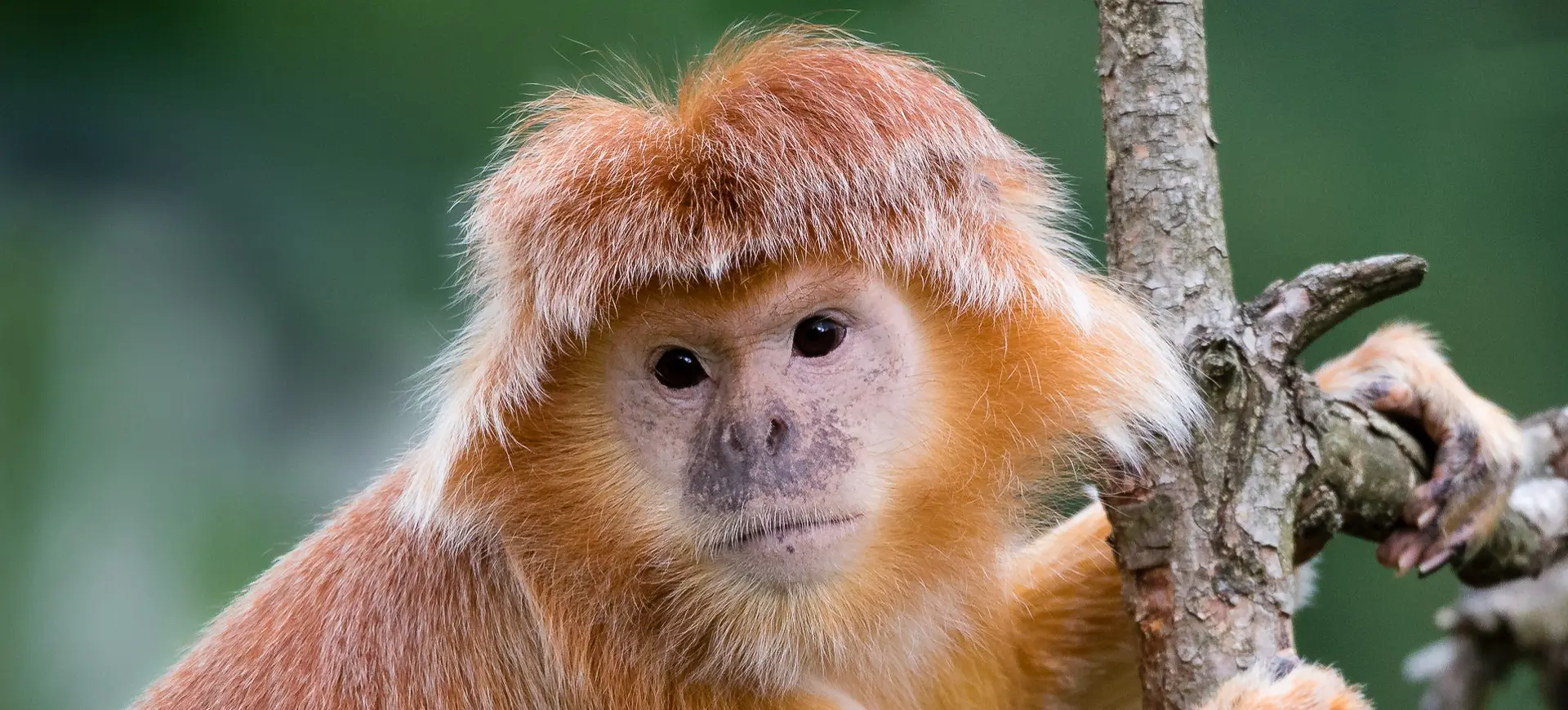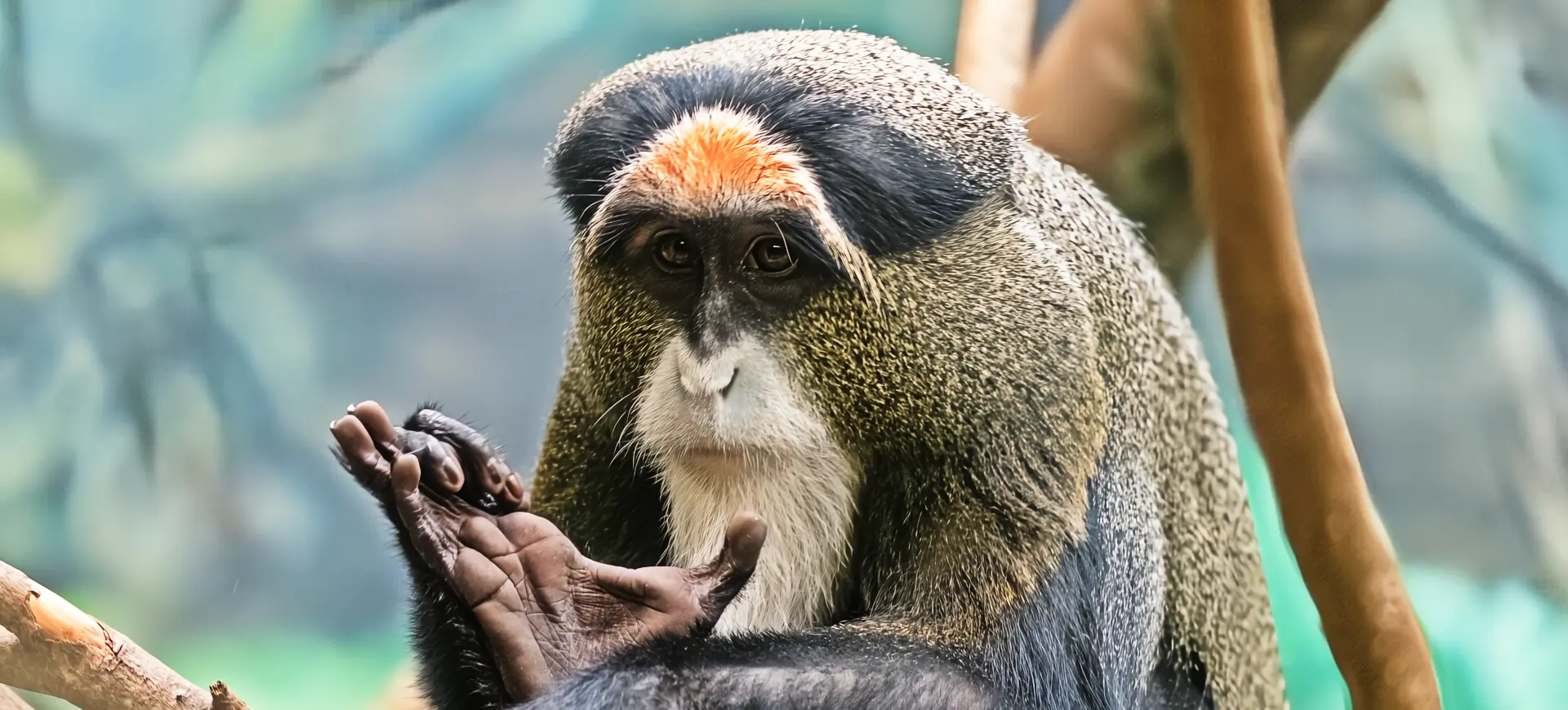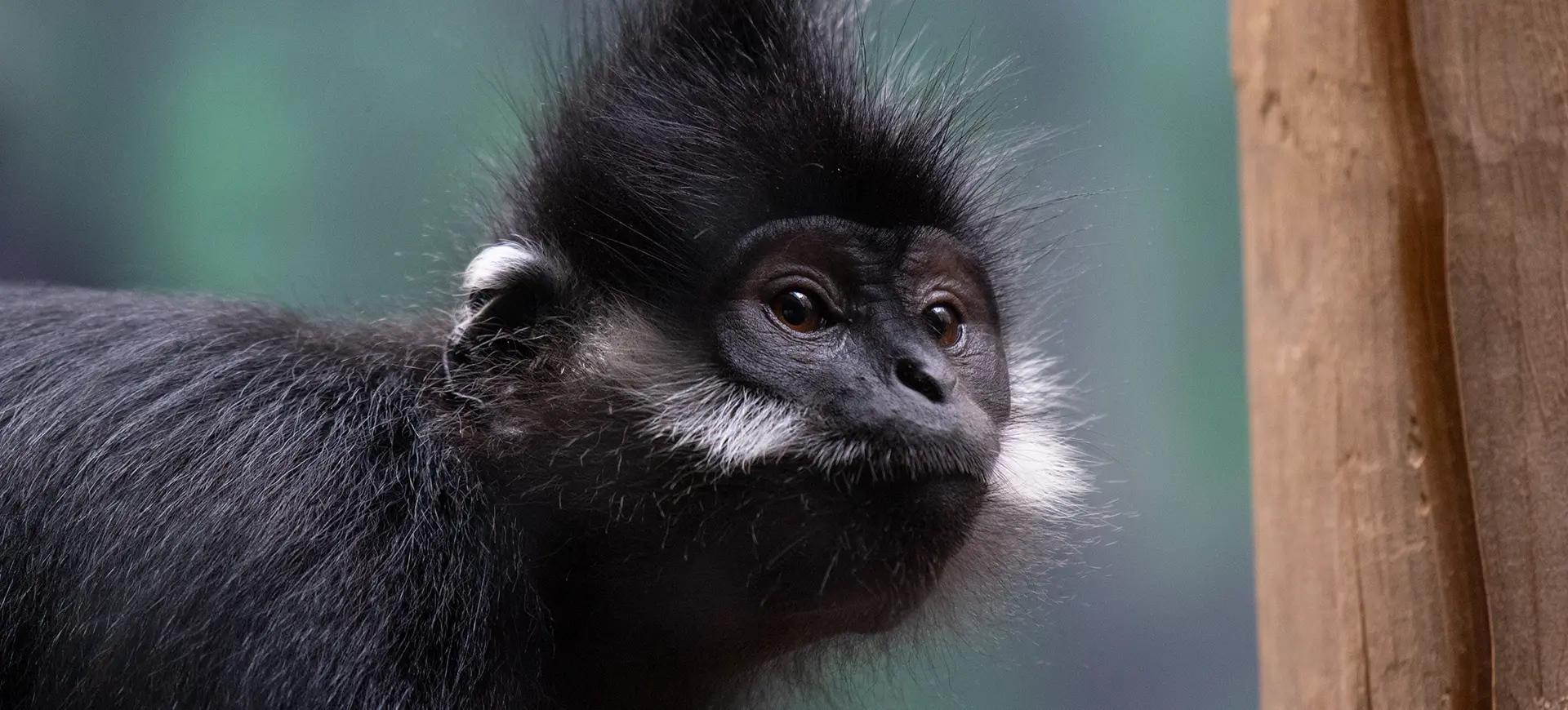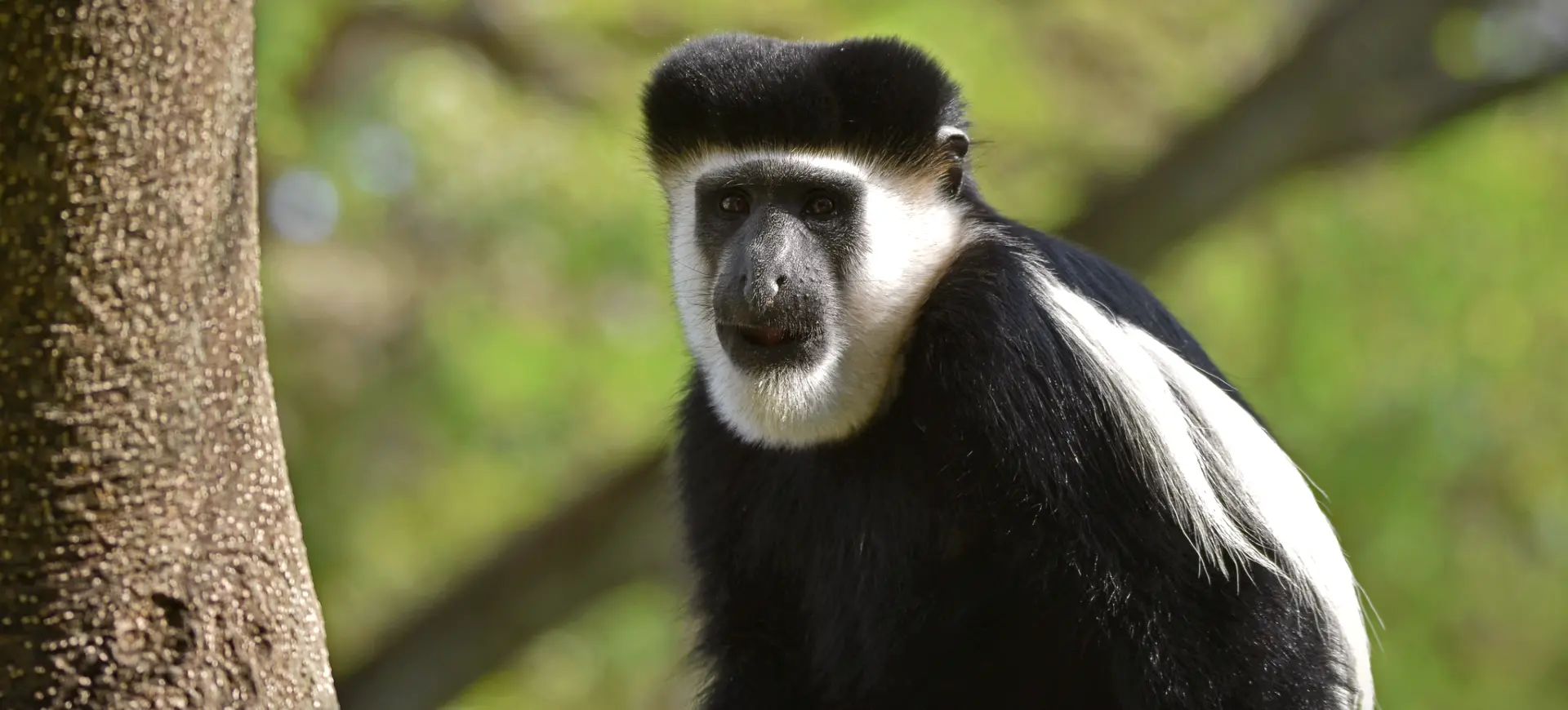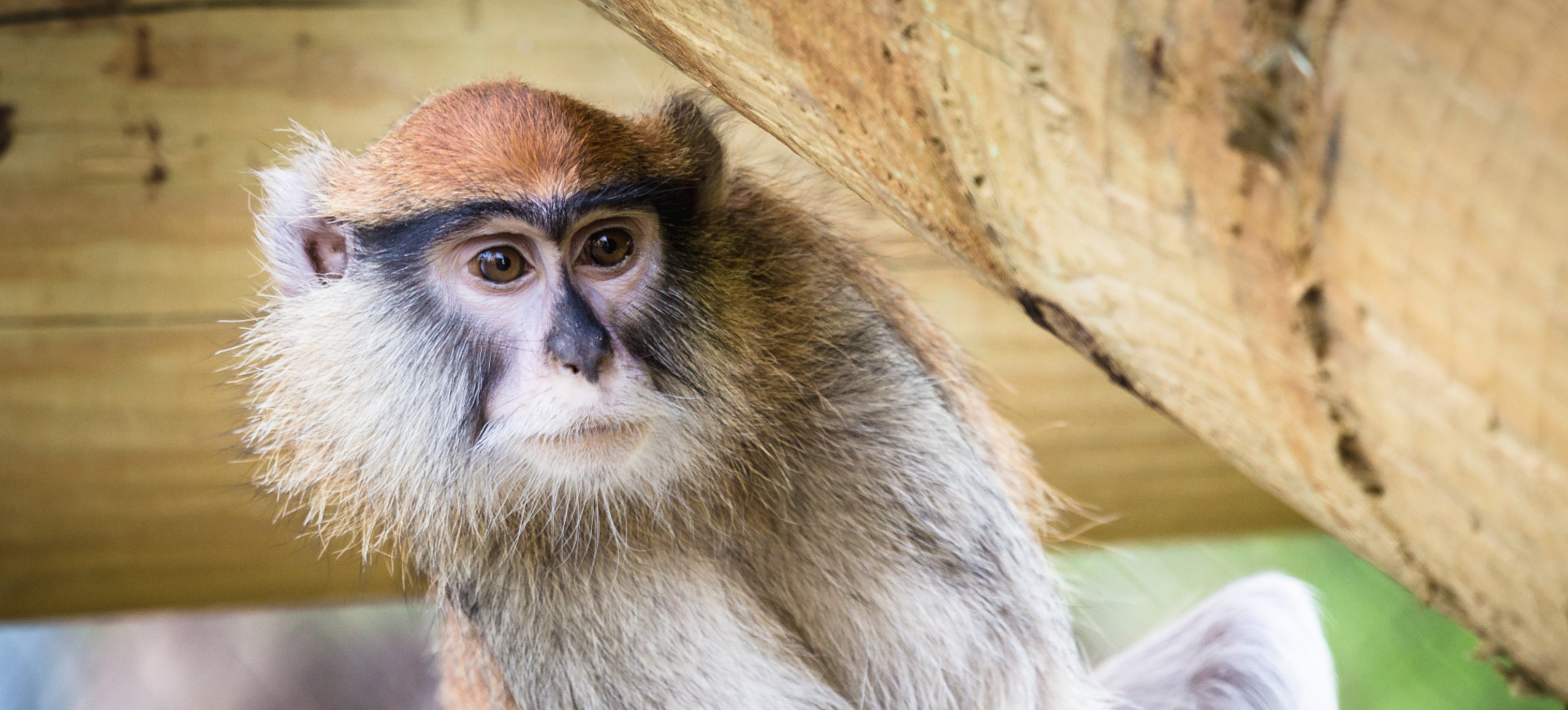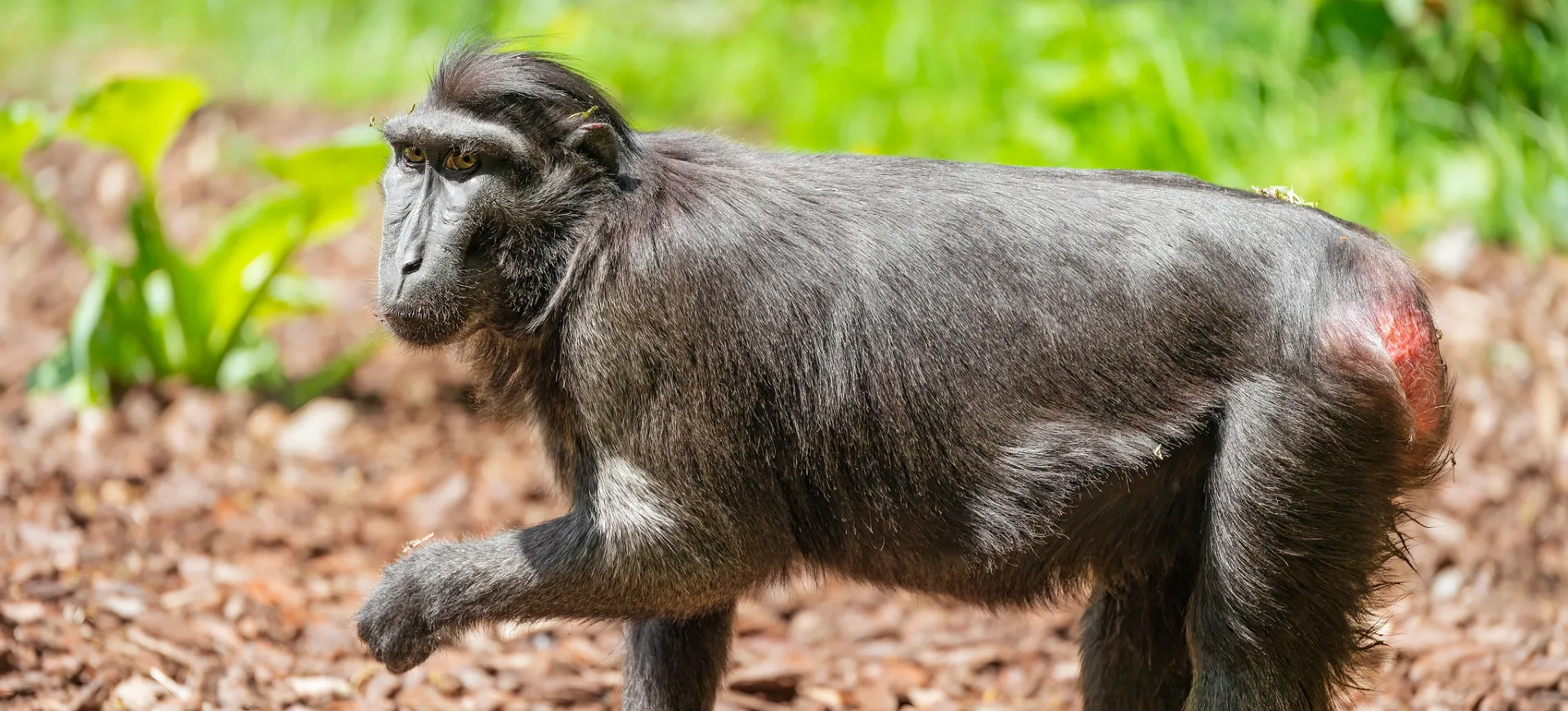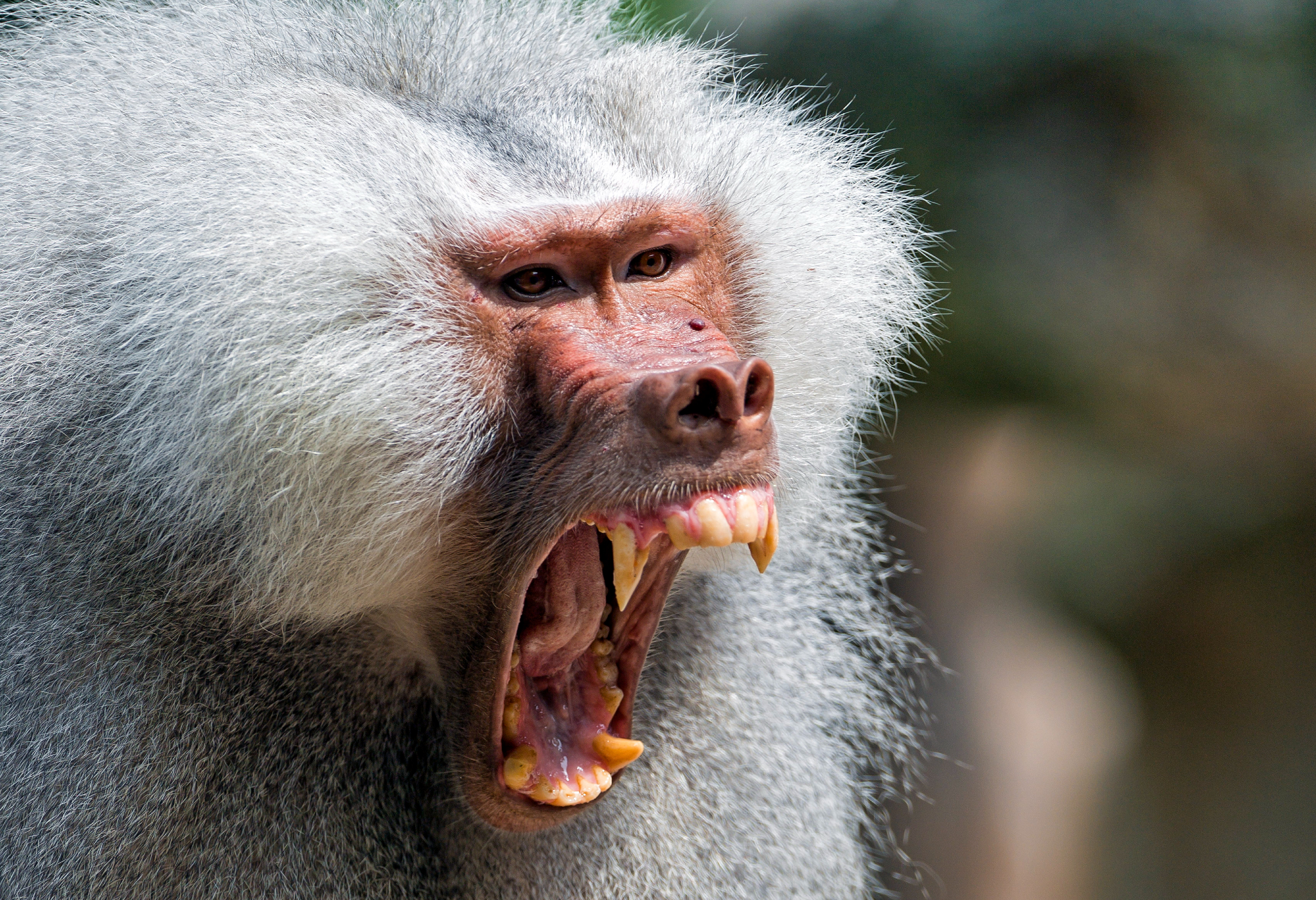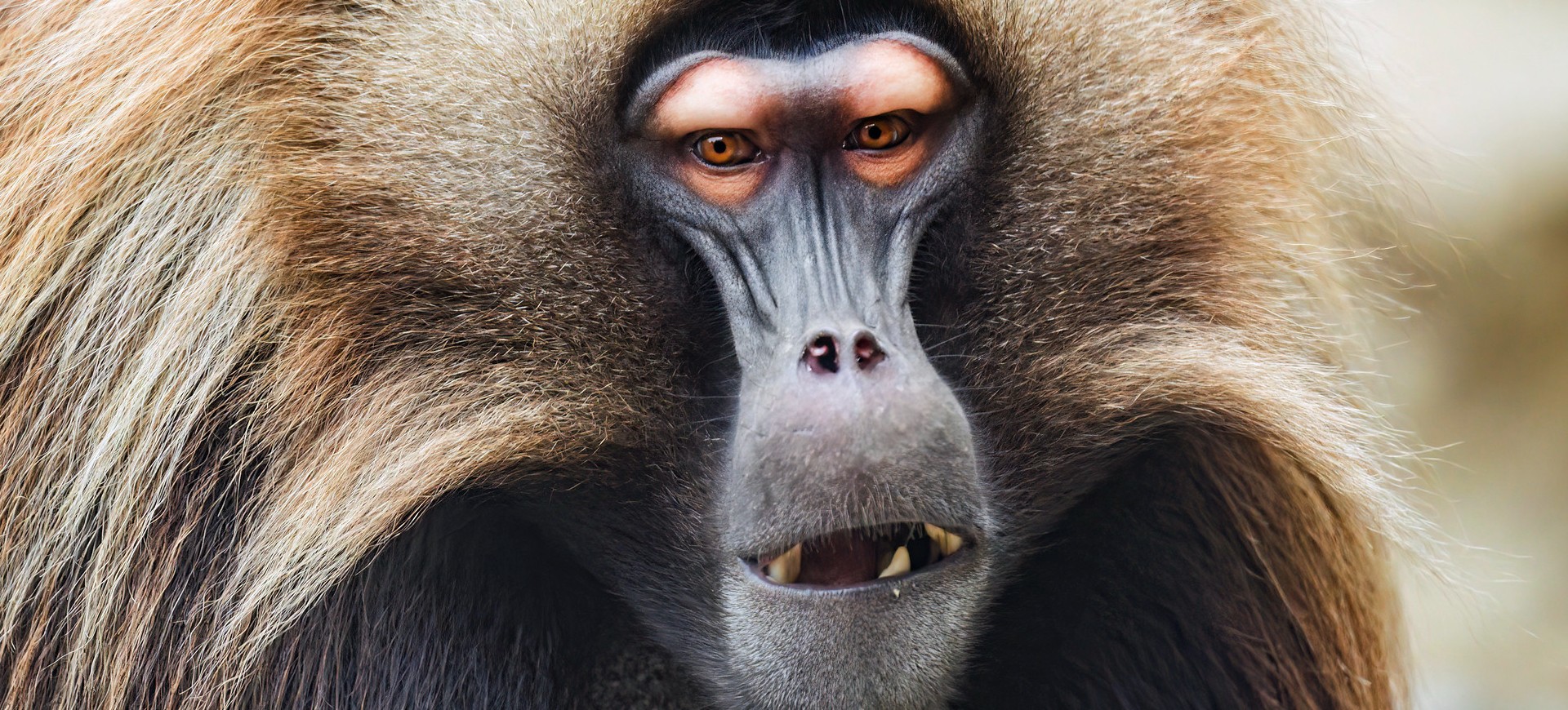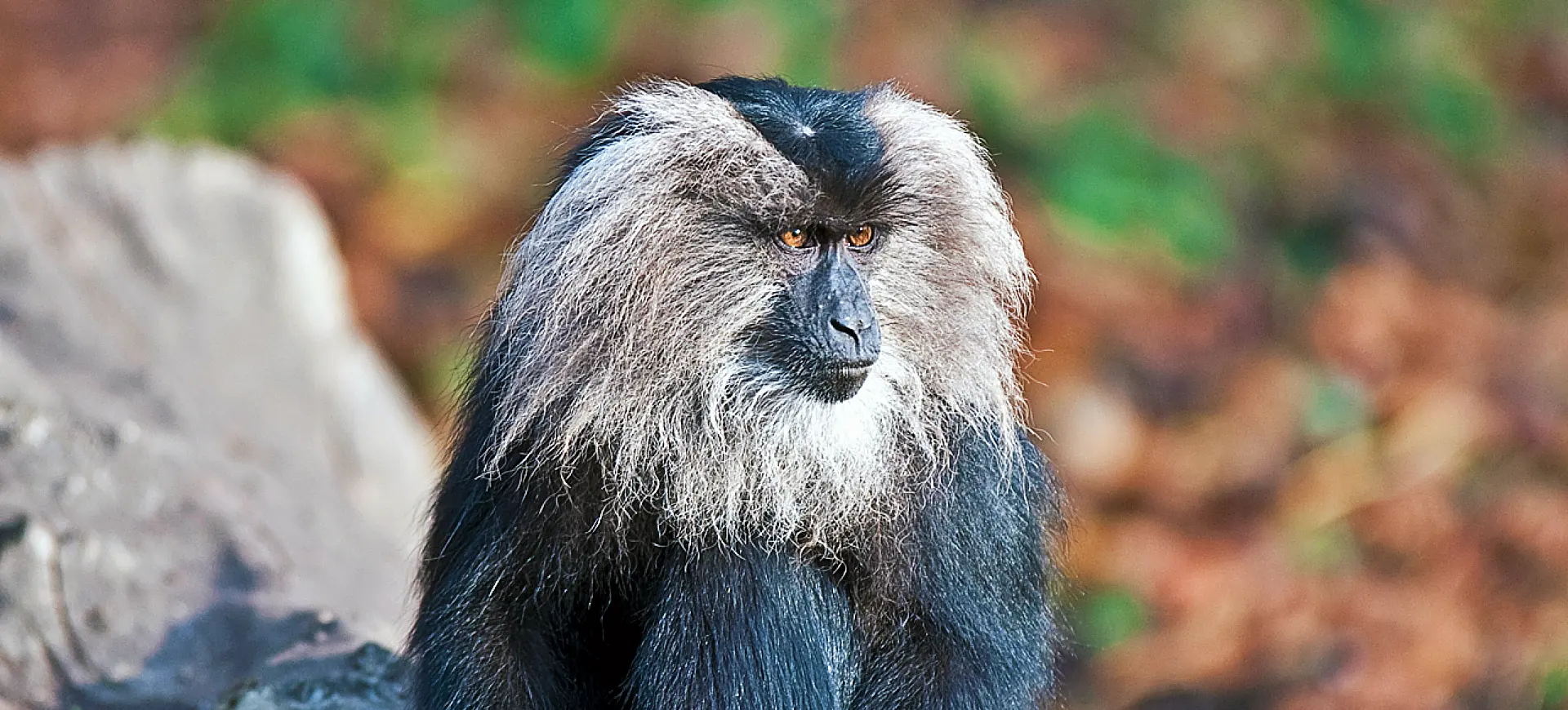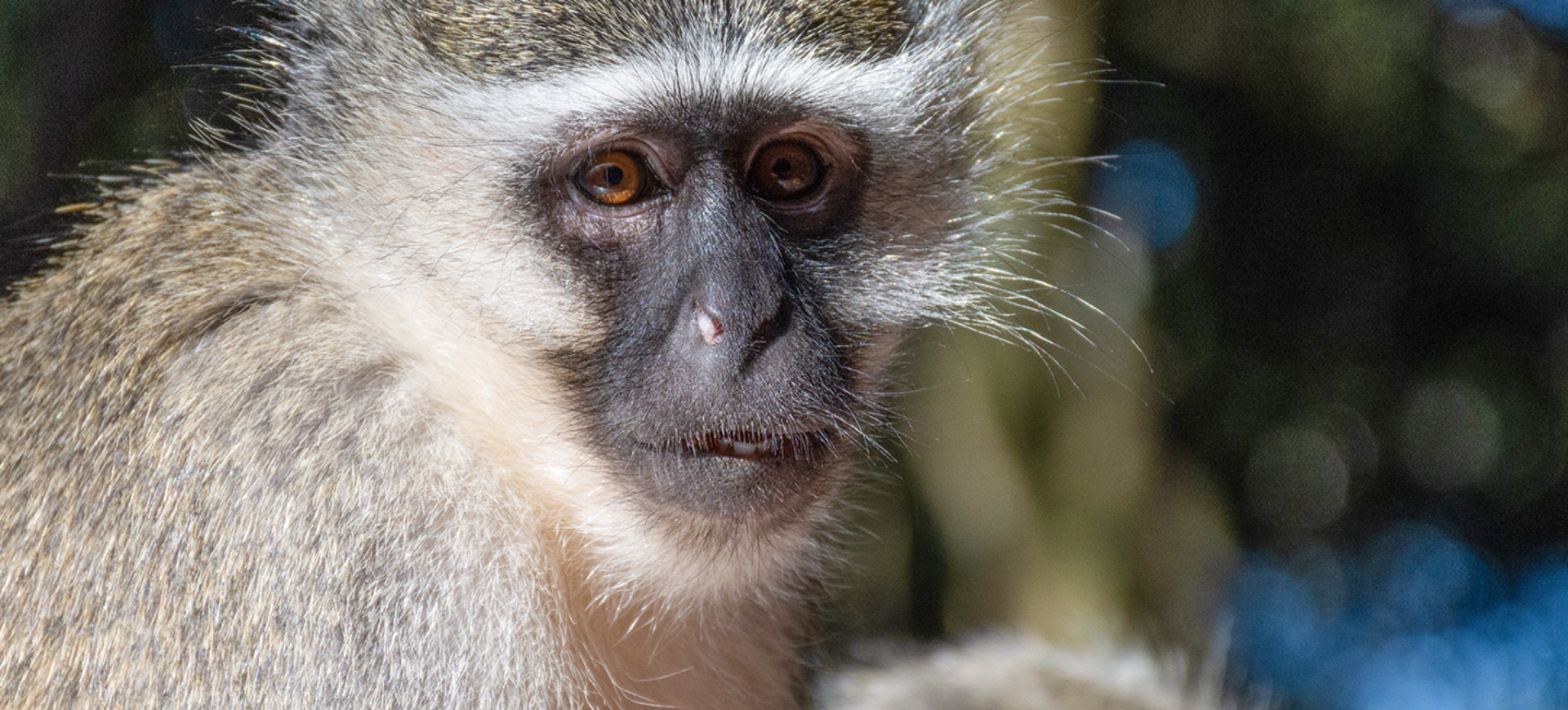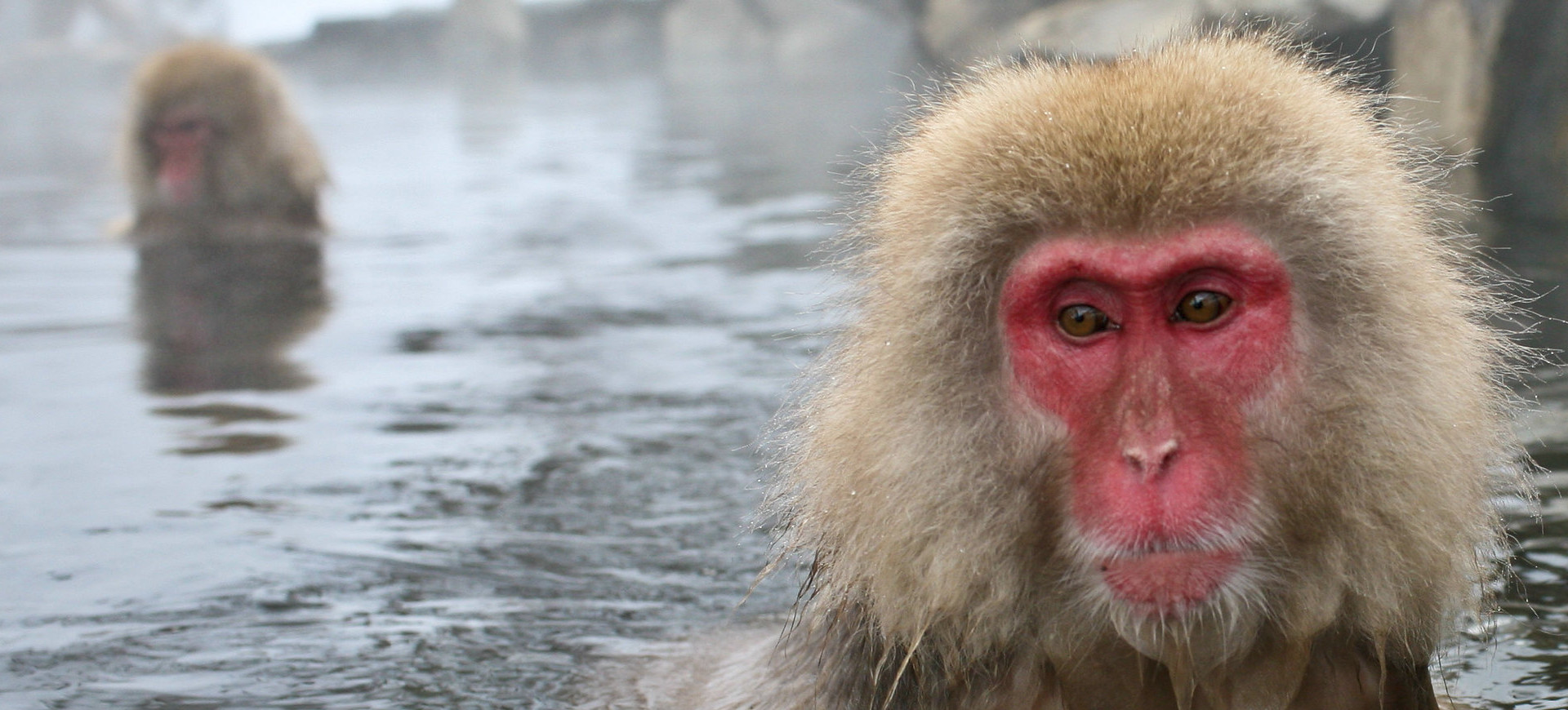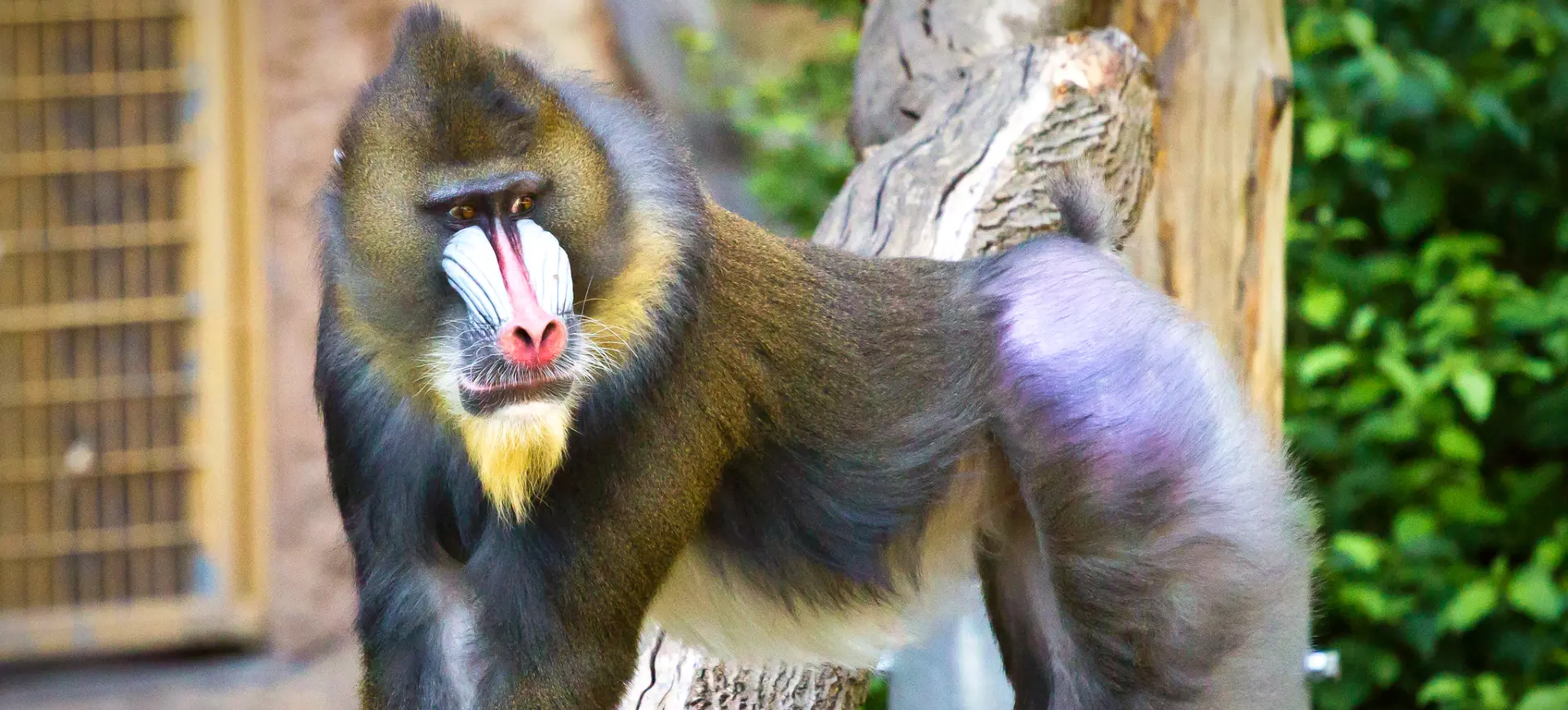Overview
Peters’ Angolan Colobus, scientifically named Colobus angolensis palliatus, is a subspecies of the Angolan Colobus monkey found in parts of Eastern Africa. This primate is characterized by its striking black-and-white coloration, with a long cape of white fur and a tufted white tail, which contrasts against its predominantly black body. Known for their arboreal lifestyle, they are primarily tree dwellers, adept at navigating the high forest canopy. Peters’ Angolan Colobus is distinguished by its peaceful nature and social behavior, typically seen in small to medium-sized groups.
These monkeys are folivorous, feeding predominantly on leaves, constituting the bulk of their diet. They have a multi-chambered stomach, similar to that of ruminants, which aids in the digestion of leaves by fermenting them. In addition to leaves, their diet also includes fruits, seeds, and flowers, varying with seasonal availability. This dietary specialization has allowed them to occupy a significant ecological niche in their forest habitats.
Peters’ Angolan Colobus monkeys exhibit a complex social structure, typically in groups ranging from 3 to 15 individuals. These groups are often multi-male, multi-female communities where both sexes coexist harmoniously. Communication within the group is maintained through vocalizations and body language, which play a crucial role in social interactions and cohesion. The species is also known for its communal care of the young, where infants are cared for by their mothers and other group members.
Taxonomy
Kingdom
Phylum
Class
Order
Family
Genus
Species
Sub Species
Type
Physical Description:
Peters’ Angolan Colobus monkeys are known for their distinctive black-and-white coloration. They look striking, with a long, flowing white mane and a tufted white tail, which stands out against their predominantly black body and limbs. Adult males and females are similar in appearance, though males are generally slightly larger. Their face is black with small, round ears, and their lack of cheek pouches gives them a slim, graceful appearance.
These monkeys have a body length of approximately 21.5 to 25.5 inches (55 to 65 cm), with the tail adding 25 to 35 inches (63 to 89 cm). Their adaptations for an arboreal life include long, strong limbs and a tail used for balance. Their hands and feet are adapted for grasping, with reduced thumbs and strong grip, essential for navigating through the forest canopy. The dense fur provides insulation against the varying temperatures in their habitat.

Lifespan: Wild: ~20 years || Captivity: ~30 years

Weight: Male: 20 to 30 lbs (9 to 13.5 kg) || Female: 15 to 20 lbs (6.8 to 9 kg)

Length: Male & Female: Body: 21.5 to 25.5 inches (55 to 65 cm) || Tail: 25 to 35 inches (63 to 89 cm)
Characteristic:
Native Habitat:
Peters’ Angolan Colobus is native to the coastal forests of Eastern Africa, particularly in Kenya and Tanzania. Their habitat primarily consists of dense, evergreen forests, where they find the necessary food sources and shelter. These forests provide them with a complex canopy structure, which is essential for their arboreal lifestyle and offers protection from predators. Preserving these natural habitats is critical for the subspecies’ survival.
Food availability influences their habitat preference, particularly the presence of suitable leafy vegetation. They are rarely found outside dense forest environments, underscoring their dependence on forested ecosystems. The ongoing loss of forest habitat due to human activities like logging, agriculture, and urban expansion poses a significant threat to their population. Conservation efforts are focused on protecting these crucial habitats and promoting sustainable land use practices.
Climate Zones:
Biomes:
Biogeographical Realms:
Continents:
Countries:
Diet:
Diet & Feeding Habits:
Peters’ Angolan Colobus monkeys have a specialized diet mainly consisting of leaves, making them folivorous. Their unique stomach structure allows them to ferment and break down leafy material, extracting necessary nutrients. In addition to leaves, they also consume fruits, flowers, and seeds, depending on seasonal availability. This diet is important in forest ecology, aiding seed dispersal and vegetation growth.
Their foraging behavior is adapted to their arboreal lifestyle, with most of their feeding in the trees. They prefer young, tender leaves, which are easier to digest and more nutritious. Their ability to digest a high-fiber diet is a key adaptation for living in forest environments where other food sources might be scarce. The consumption of various plant materials highlights their role as important ecological contributors in their habitats.
Mating Behavior:
Mating Description:
The mating system of Peters’ Angolan Colobus monkeys is polygynous, with dominant males mating with multiple females within their group. The breeding season is not strictly defined, often aligning with the availability of food resources, which are crucial for the females’ health and successful rearing of offspring. Courtship involves grooming and vocal communications, which establish and strengthen pair bonds. The dominant males play a key role in protecting the group and ensuring the safety of the young.
Gestation in Peters’ Angolan Colobus lasts approximately six months, after which a single infant is usually born. The mother is the primary caregiver, although other females in the group may also participate in caring for the young—the infants depend on their mothers for nourishment and protection during their early months. The supportive environment of the group plays a vital role in the development and survival of the young monkeys.
Reproduction Season:
Birth Type:
Pregnancy Duration:
Female Name:
Male Name:
Baby Name:
Social Structure Description:
Peter’s Angolan Colobus, known scientifically as Colobus angolensis palliatus, exhibits a unique and complex social structure. These primates typically live in groups of one adult male, multiple adult females, and their offspring. This social structure, often termed a one-male unit or harem, promotes a cohesive group dynamic essential for protection and resource sharing. Within the group, females exhibit a strong social bond, often seen grooming each other and cooperating in the care of the young, which strengthens the group’s social cohesion and stability.
The hierarchy within Peter’s Angolan Colobus groups is relatively fluid, especially among the females. The dominant male, usually the only adult male in the group, plays a crucial role in defense against predators and rival males. Interestingly, males often leave their birth groups upon reaching maturity, seeking to establish or take over other groups, while females typically remain in their natal groups. This social structure facilitates genetic diversity and reduces inbreeding, as males migrating to new groups breed with unrelated females.
Groups:
Conservation Status:
Population Trend:
Peters’ Angolan Colobus monkeys are classified as Endangered by the IUCN Redlist, mainly due to habitat loss and fragmentation. Their populations are declining as their forest habitats are increasingly being destroyed or degraded by human activities. The exact number of individuals remaining in the wild is not well-documented, making it difficult to assess the full extent of their decline. Their survival heavily depends on the conservation and restoration of their natural habitats.
Conservation strategies for Peters’ Angolan Colobus include protecting existing forest habitats, restoring degraded areas, and establishing wildlife corridors to enhance population connectivity. Community-based conservation projects involving local people in protecting these monkeys and their habitats are crucial. Education and awareness programs help reduce poaching and the illegal pet trade. Collaborative efforts involving governments, conservation organizations, and local communities are essential for effectively conserving this subspecies.
Population Threats:
The primary threats to Peters’ Angolan Colobus include habitat destruction due to logging, agricultural expansion, and urban development. This habitat loss leads to the fragmentation of their populations, reducing genetic diversity and isolating groups. Additionally, they face threats from hunting and capture for the illegal pet trade. The loss of their natural habitat also makes them more vulnerable to predation and competition for food resources.
Efforts to mitigate these threats include enforcing anti-poaching laws, regulating land use, and promoting sustainable forestry practices. Community-based conservation initiatives are crucial in involving local populations in protecting these monkeys and their habitats. Addressing the root causes of habitat destruction and implementing comprehensive conservation plans are necessary for the long-term survival of Peters’ Angolan Colobus.
Conservation Efforts:
Conservation initiatives for Peters’ Angolan Colobus focus on protecting and managing their natural habitats. This includes establishing and enforcing protected areas, promoting sustainable forestry practices, and restoring degraded lands. Efforts are also made to create wildlife corridors that connect isolated populations, enhancing genetic diversity and survival prospects.
Community involvement in conservation is essential, particularly in regions where human activities impact their habitat. Education programs raise awareness about the importance of conserving Peters’ Angolan Colobus and their role in the ecosystem. Research on their ecology and population dynamics is vital for conservation planning. Given the transboundary nature of environmental challenges and conservation efforts, international cooperation is key.
Additional Resources:
Fun Facts
- Peter’s Angolan Colobus is known for its striking appearance, characterized by black fur with contrasting white shoulders, whiskers, and tail tuft.
- These primates have specialized stomachs adapted for fermenting tough plant materials, allowing them to consume leaves indigestible to many other animals.
- Unlike many other primates, Peter’s Angolan Colobus does not have thumbs, an adaptation that makes their hands more hook-like for efficient movement in the trees.
- They are skilled acrobats and can leap up to 50 feet (15 meters) from tree to tree in their forest habitats.
- The loud, roaring calls of Peter’s Angolan Colobus can be heard over a distance of up to 3 kilometers, serving as a means of communication within and between groups.
- Newborns have a completely white coat, which gradually changes to the adult coloration as they mature.
- These primates play a crucial role in their ecosystem by dispersing seeds through their feces, aiding forest regeneration.
- Peter’s Angolan Colobus is known to eat charcoal from burnt trees, which is thought to help detoxify their plant-based diet.
- They have a unique four-chambered stomach, similar to a cow, to digest the cellulose in leaves efficiently.
- During resting periods, individuals within a group can often be observed engaging in mutual grooming, which strengthens social bonds and helps maintain our health.





